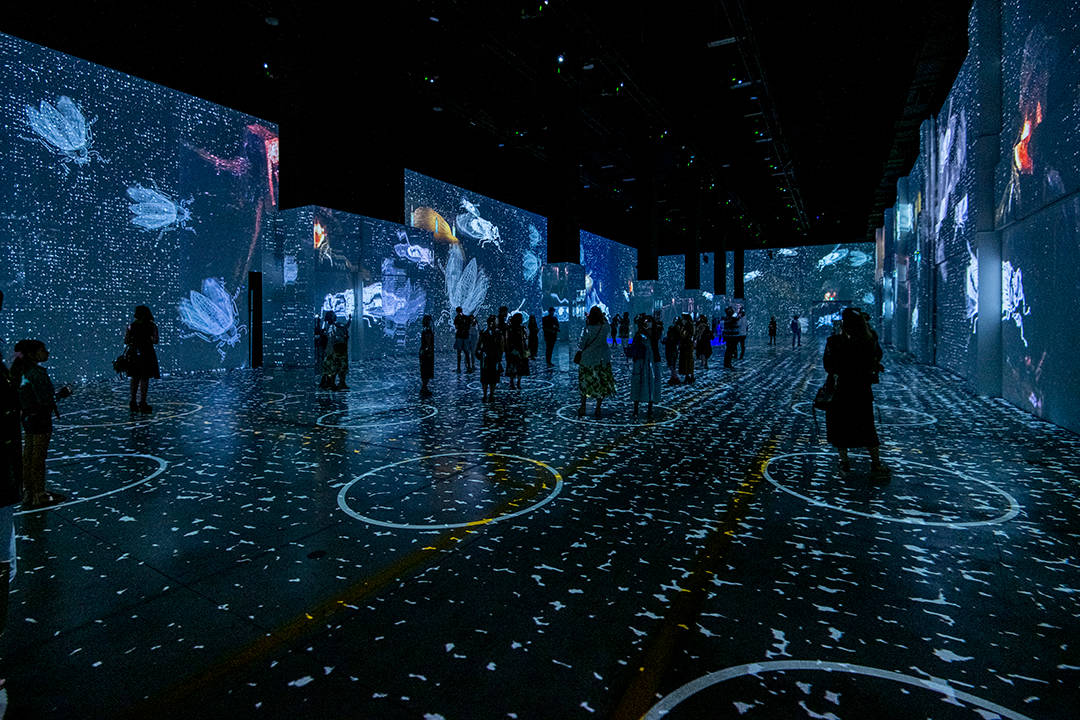The Immersive Van Gogh Exhibit, which opened in Toronto on July 1, animates the works of Post-Impressionist painter Vincent van Gogh. Rather than distinctly framed works mounted on walls, the space itself transforms into a boundless show, with the viewers at the centre of the action becoming a part of the paintings.
These projections aim to offer an enhanced and fresh perspective of van Gogh’s expressive brushwork and vibrant use of colour. But the show ultimately proved to be a cheap appropriation of genius.
Van Gogh’s famous works were reincarnated into a dynamic show. “Irises” bloomed, “Olive Trees” grew from root to sky, and clouds swirled over the circulating sails of windmills. Amplified brushstrokes surpassed the possible reach of the naked eye, awakening what Walter Benjamin referred to as the optical unconscious — the idea that technology can grant us access to things otherwise unnoticeable.
The soundtrack was in pleasant harmony with the visual projections. The “Sarabande” by George Frideric Handel, recognizable from the film Barry Lyndon, tastefully accompanied “The Yellow House.” Similarly paired, the sun from “The Sower” rotated around the room to the French song, “Non, je ne regrette rien” by Édith Piaf, instilling a longing for France for those vulnerable to that kind of nostalgia.
But a lack of wholeness prevented immersion. Pipes crawled up the walls of the rectangular, industrial space, incongruous with the natural inclination of van Gogh’s art. Colours flooded the room like spilled cans of paint and reflected off of mirrors that were used for selfies. The view was obstructed by other visitors and a staircase leading to a large platform. Fragments of paintings contorted over bumpy walls then disintegrated like peeling wallpaper.
I would not call this an exhibit but a show — fleeting entertainment like watching fireworks, with flashing lights, bright colours, and bursts of loud noises.
To its detriment, the show was incredibly imaginative. Paintings were not only animated but also had new components. A subjective experience captured in stillness on canvas was instead in constant movement, undermining van Gogh’s lively line work that carries enough suggestive power in itself. The movement does what your own imagination is meant to, and the loud soundtrack replaces the reflective silence one experiences in a gallery. The effective animations cradled the viewer’s mind.
No doubt, anyone with rigid artistic convictions will be disappointed. Purists will see the deviation from van Gogh’s intention as unfaithful, while even the subversive artists will see through the facade. What appears at face value to be innovative is just conformity of a different kind — a perversion of traditional art with a glaringly commercial intention.
Van Gogh has been made into a brand. His artworks have been reduced to consumable products — cheaply diminishing their artistic value — that serve to profit commercial enterprises. Price tags in the gift shop were sky-high, featuring a $3,000 van Gogh purse from the Jeff Koons x Louis Vuitton collaboration. I am a guilty participant, having recently purchased a mug designed with “The Starry Night” at the Museum of Modern Art (MoMA). Ironically, van Gogh is thought to have sold only a few artworks in his life. His work was unconventional for the time, and he struggled with poverty and mental illness.
Upon entering, guests were handed face masks printed with a masked van Gogh self-portrait — both marketable and COVID-19-friendly. Instead of informative museum blurbs and pamphlets, the reading selection consisted of signs with puns like “Gotta Gogh? Washroom” and “Gogh This Way,” and the TV screens displayed fun facts like “Starry Night is Van Gogh’s most famous painting.”
During the show, the eyes of mandatorily-masked faces gazed at the contrived images through their phone screens, twice removed from van Gogh’s originals. Guests were provided with a trendy backdrop for an Instagram photo and an opportunity to make themselves feel cultured.
Benjamin proposed that the mechanical reproduction of art has stripped it of its aura — the experience of uniqueness and distance. No matter how mesmerizing an immersive exhibit can be, it is incomparable to the sacred experience of standing in front of an original artwork after travelling to see it. For secular critics to deny that the Louvre’s 9.6 million visitors in 2019 are pilgrims is merely a distinction without a difference.
Unlike a painted canvas, the concrete beneath the projections remains unchanged upon completion. Perhaps, van Gogh, resurrected, would feel betrayed by this show. It’s possible that he would be proud to see what he inspired, though it is safe to assume that he would be much more honoured to know that his “The Starry Night” is eternally famous and currently hangs in the MoMA.
The show finished with a projection of van Gogh’s handwritten name. The perfect ending to an inauthentic experience: the artist’s signature, forged to consent to the corruption of his own work.


